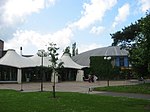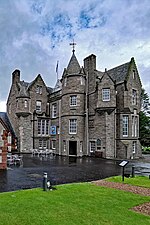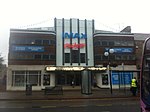Royal Perth Golfing Society
1824 establishments in ScotlandGentlemen's clubs in ScotlandGolf club and course stubsGolf clubs and courses in Perth and KinrossOrganisations based in Scotland with royal patronage ... and 7 more
Organizations established in 1824Royal golf clubsScottish organisation stubsScottish sports venue stubsSport in Perth, ScotlandSports clubs and teams established in the 1820sUse British English from August 2017
The Royal Perth Golfing Society, or its full name of The Royal Perth Golfing Society & County and City Club, is a golfing and private members club in Perth, Scotland, with premises overlooking the North Inch.
Excerpt from the Wikipedia article Royal Perth Golfing Society (License: CC BY-SA 3.0, Authors).Royal Perth Golfing Society
Magpie Way, Perth North Muirton
Geographical coordinates (GPS) Address Nearby Places Show on map
Geographical coordinates (GPS)
| Latitude | Longitude |
|---|---|
| N 56.404 ° | E -3.432 ° |
Address
North Inch
Magpie Way
PH1 5FP Perth, North Muirton
Scotland, United Kingdom
Open on Google Maps











